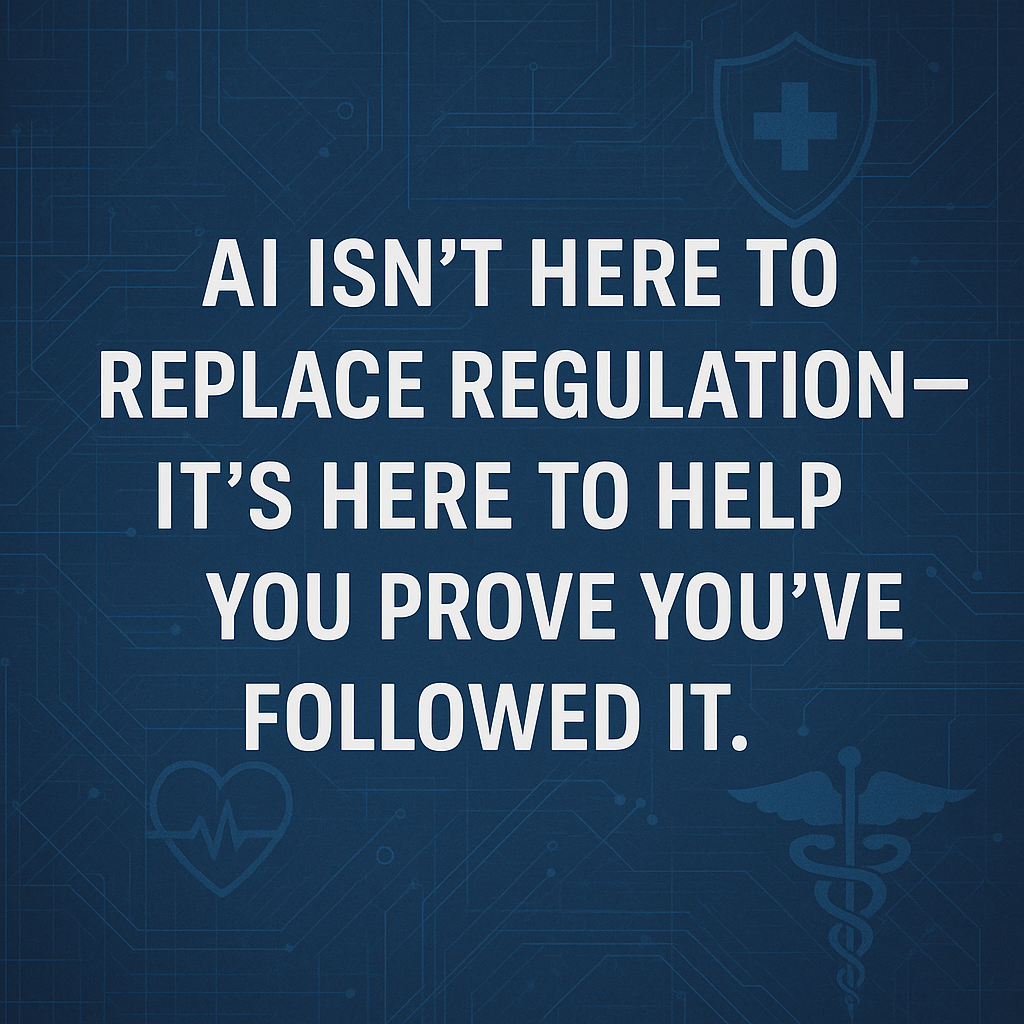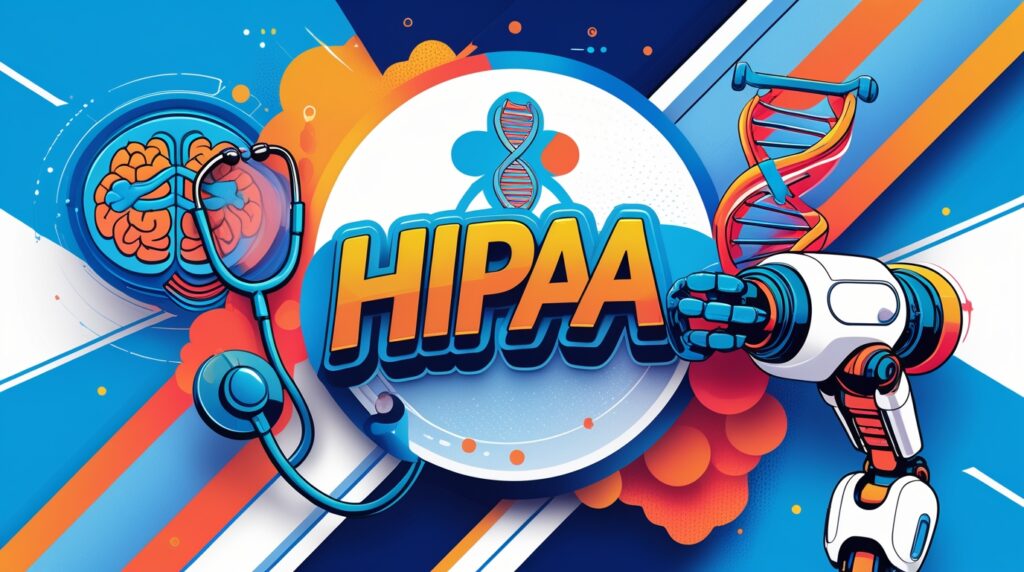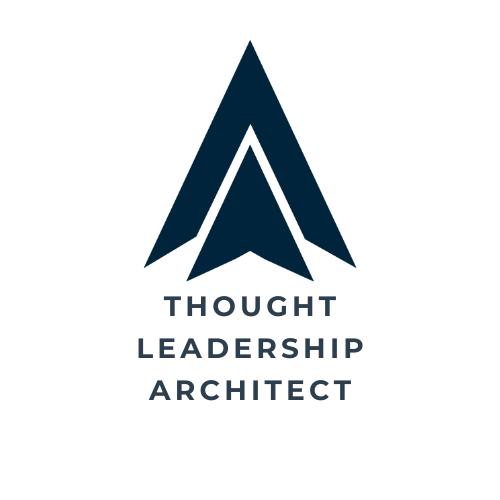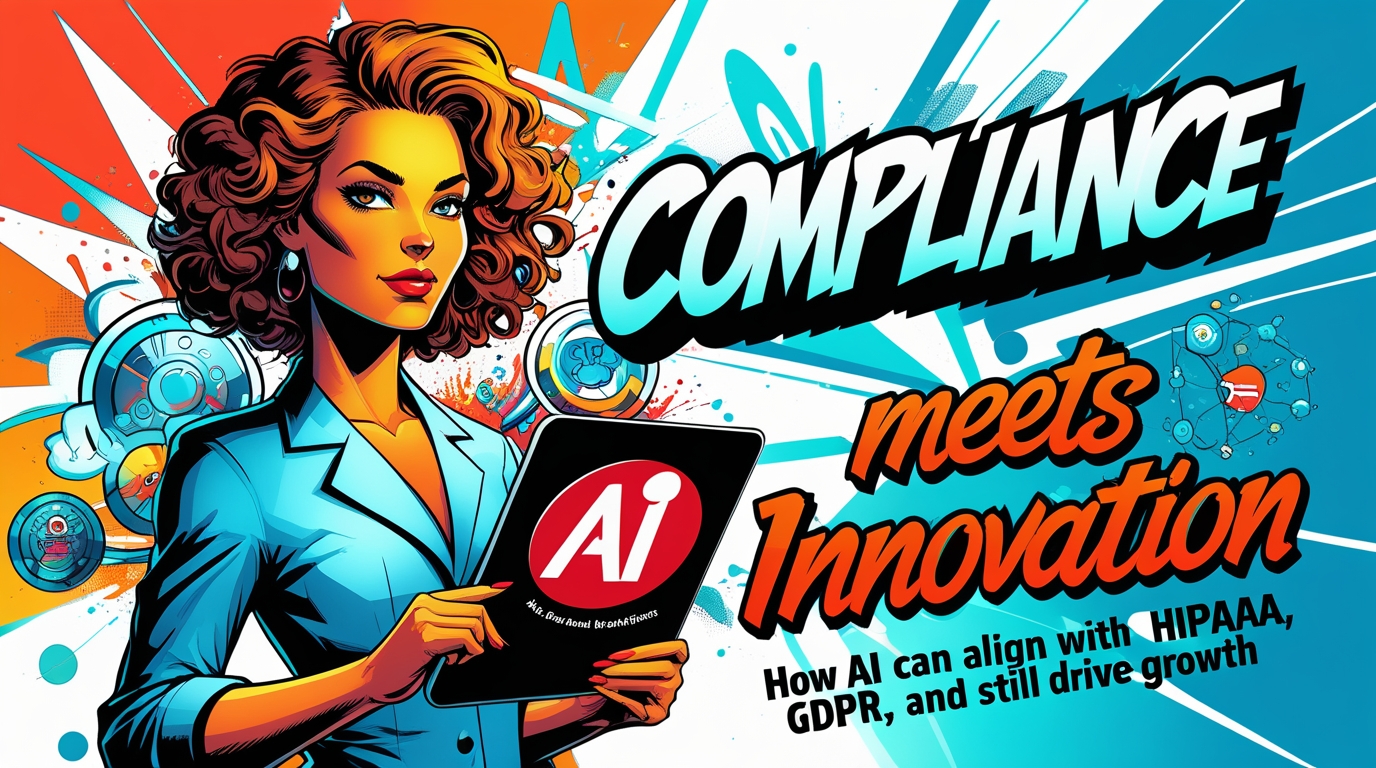Your cart is currently empty!
In the era of digital acceleration, healthcare and pharmaceutical leaders are walking a regulatory tightrope—striving for innovation while ensuring airtight compliance. With AI becoming a core driver of transformation, the question arises: Can artificial intelligence truly align with strict regulatory frameworks like HIPAA and GDPR without compromising growth?
The answer is a resounding yes, but it requires a thoughtful architecture of both technology and leadership. Here’s how today’s AI-powered companies are marrying compliance and innovation for strategic advantage.

The Dual Mandate: Innovation & Compliance
For leaders in health and pharma, the landscape is uniquely high-stakes. The Health Insurance Portability and Accountability Act (HIPAA) in the U.S. and the General Data Protection Regulation (GDPR) in the EU impose strict controls on the handling, transmission, and storage of personal health data. At the same time, competitive pressure demands that organizations leverage AI, machine learning, and automation to stay relevant.
“Innovation without compliance is reckless. But compliance without innovation is stagnation,” says Dr. Emily Hauser, Chief Data Ethics Officer at a major biopharma firm. “The new frontier is finding the synergy.”
Common Legal & Regulatory Concerns with AI in Healthcare
- Data Privacy & Consent
AI systems thrive on data—but not all data is created equal. Healthcare AI often depends on sensitive health records, imaging, and behavioral data, raising issues of consent, anonymization, and patient control. - Data Minimization and Purpose Limitation (GDPR)
Under GDPR, data must only be used for specific, limited purposes. But many AI models are trained on broad datasets, challenging these legal boundaries. - Explainability and Bias
Regulatory bodies increasingly demand that AI decisions—especially in clinical or operational contexts—are explainable and free from systemic bias. - Third-Party Vendor Risk
Healthcare systems often rely on external AI providers. If vendors mishandle data or breach compliance, liability can extend to the hiring institution.

How AI Can Strengthen Regulatory Compliance
Here’s the twist: when implemented correctly, AI doesn’t just comply with regulation—it can actually enhance it. Let’s explore how.
1. Intelligent Anonymization and De-Identification
Modern AI tools can scrub identifiers from medical records far more effectively than manual processes. This enables safe training of models while preserving patient privacy.
“Today’s de-identification AI systems use NLP and computer vision to detect and redact sensitive data in unstructured files like clinical notes or x-rays with incredible accuracy,” says Karla Menendez, CTO of MedSecure AI.
2. Automated Compliance Monitoring
AI can audit internal data flows and flag non-compliant access or usage in real time. For example:
- Detecting when staff export large datasets
- Tracking improper role-based access
- Flagging anomalies in consent records
3. Built-in Consent and Usage Tracking
Smart systems can log when, how, and for what purpose data is used. This meets GDPR’s need for transparency and traceability.
4. Bias Detection in Medical AI
AI systems can be trained to audit other AI systems for fairness and equity—flagging instances where race, gender, or socioeconomic factors might be influencing decisions inappropriately.
5. Vendor Vetting and Model Governance
AI can assess third-party risk using automated scoring models based on regulatory history, technical audits, and security posture.
Designing AI for Compliance from the Ground Up
To maximize trust and performance, healthcare leaders must bake compliance into the architecture of their AI strategies:
* Data Governance by Design
Use Data Protection Impact Assessments (DPIAs) early in development to understand potential exposure points.
*Model Explainability Tools
Use frameworks like SHAP (SHapley Additive exPlanations) or LIME (Local Interpretable Model-agnostic Explanations) to ensure outputs are interpretable—especially for clinicians.
*Federated Learning
Where possible, use federated learning: a model-training technique where data never leaves the hospital or clinic, only the insights do. This reduces compliance risk drastically.
*Audit Trails & Immutable Logs
Blockchain or cryptographic logs ensure your organization can demonstrate regulatory compliance at every step.

Use Case: A Pharma Company’s AI-Driven R&D, Built for Compliance
A leading European pharmaceutical firm recently implemented AI for early-stage drug discovery—analyzing massive datasets to identify protein targets. Rather than moving patient data across borders (a GDPR red flag), they used federated AI to train their models inside each partner institution, encrypting outputs and maintaining full compliance.
They also used AI-generated audit reports to prove compliance during EU inspections—turning what used to be a cost center into a confidence booster for investors.
Why This Matters for Growth
Too many firms still view compliance as a barrier to innovation. But the opposite is true:
- Compliance creates trust, and trust accelerates adoption.
- Audit-ready AI systems attract partnerships and capital.
- Smart compliance strategies reduce legal exposure, reputational risk, and costly fines.
According to a 2025 McKinsey HealthTech Outlook report, “Companies that integrated AI and regulatory strategy from the start experienced 38% faster go-to-market timelines and 50% fewer legal interventions.”¹
The Thought Leadership Advantage
Health sector executives must now lead with both vision and vigilance. At Thought Leadership Architect™, we believe the future belongs to those who understand:
“AI isn’t here to replace regulation—it’s here to help you prove you’ve followed it.”
By pairing technical innovation with ethical transparency, today’s health and pharmaceutical companies can build a stronger, safer, and smarter future—while staying firmly on the right side of the law.

Key Takeaways:
- AI can enhance HIPAA/GDPR compliance through automation, anonymization, and traceability.
- Build compliance into your AI systems from day one: governance, transparency, federated learning.
- Thought leaders must bridge the compliance-innovation gap to lead with trust, not just tech.
Bibliography
- McKinsey & Company. HealthTech Outlook 2025: Trust, Tech & Transformation. (2025).
- European Commission. Guidelines on Artificial Intelligence and Data Protection. (2023).
- U.S. Department of Health & Human Services. HIPAA Privacy Rule and AI Guidance. (2024).
- Menendez, K. (2025). CTO Interview, MedSecure AI White Paper on NLP in Healthcare.
- Hauser, E. (2025). Leadership Panel on Ethics in AI Healthcare Deployment, WHO AI Forum.
#AICompliance #HealthTech #HIPAA #GDPR #DigitalHealth #PharmaInnovation #MedTech #FederatedLearning #AIinHealthcare #ThoughtLeadership



Leave a Reply